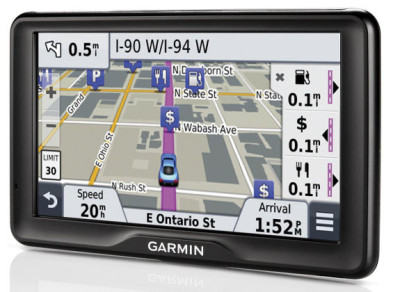As smartphones become better at, well, everything, a lot of people are starting to shift away from dedicated GPS units in favor of smartphones for navigation. And, while both have maps and routing and both can lead you in circles at the drop of a hat (although personally I’d trust a GPS over a smartphone any day), there are some smaller things that a lot of GPS units offer which smartphones simply can’t match.
It is worth noting that not every GPS unit will have all of these things, but most of them are pretty standard on newer units.
Landmark Directions
A lot of newer units, especially Garmin devices, will have directions that are based on the landmark instead of a random distance. Unless you’re really good with distances, “Turn left after the gas station” is probably going to be easier to follow than “Turn left in 300 feet.”
Lane Guidance
Almost all GPS units will have some form of lane guidance to help you figure out which lane suddenly will become turn-only and what lane you need to be in. Some smartphone mapping applications offer this, but most do not and at any rate, your GPS will give you far more warning than a smartphone would, which is a must on busy highway interchanges.
Uninterrupted Navigation
If you’re using your smartphone for navigation, what happens when you get a call? Well, then you have two options: answer the call and lose your navigation (or, in the case of some phones, have your GPS talk over your conversation which is even more distracting) or ignore the call and continue. With the level of smartphone addiction on the rise, I think we can all agree that missing the call is the less likely choice.
Speed Alerts
Most GPS units will have a display of how fast you’re currently going, and many of them also will list what the actual speed limit is supposed to be. If you’re one of those people who speeds, then this might not be super helpful, but I personally love that feature. Some GPS units also will show speed cameras, but I’m not sure that’s exclusive to GPS units.
Preloaded Points of Interest (POIs)
Almost all GPS units will include some preloaded points of interest like gas stations, rest stops, restaurants and more. Many will show these on your way without any prompting which can be incredibly useful on long trips. Phones, by contrast, will often require you to exit navigation to make a specific search for something like that.
Updated ETA Estimates
A lot of GPS units have traffic included, and many of these will keep track of your ETA (estimated time of arrival) and constantly update it so you can at a glance tell how late you’re going to be to an event.
Customizable Voices
Maybe I’m alone, but the voice included with Google Maps is just downright grating sometimes. With a majority of GPS units, you will be able to select from several different voice options or even download your own. Want Yoda to be your navigator? Done! Try doing that with a smartphone.
Easy to Read and Use
At the end of the day, automotive GPS units are meant to be used in a car, and there are rigid guidelines that all makers must comply with for safety reasons. Devices are designed so that drivers can get the maximum amount of information at a glance with easy to read fonts and maps and even voice-activated instructions.

These are all software problems, and some of them are already solved with Waze.
Waze is not accurate and you depend on other drivers to give you accurate information while CoPilot has all of this from an actual team of experts.